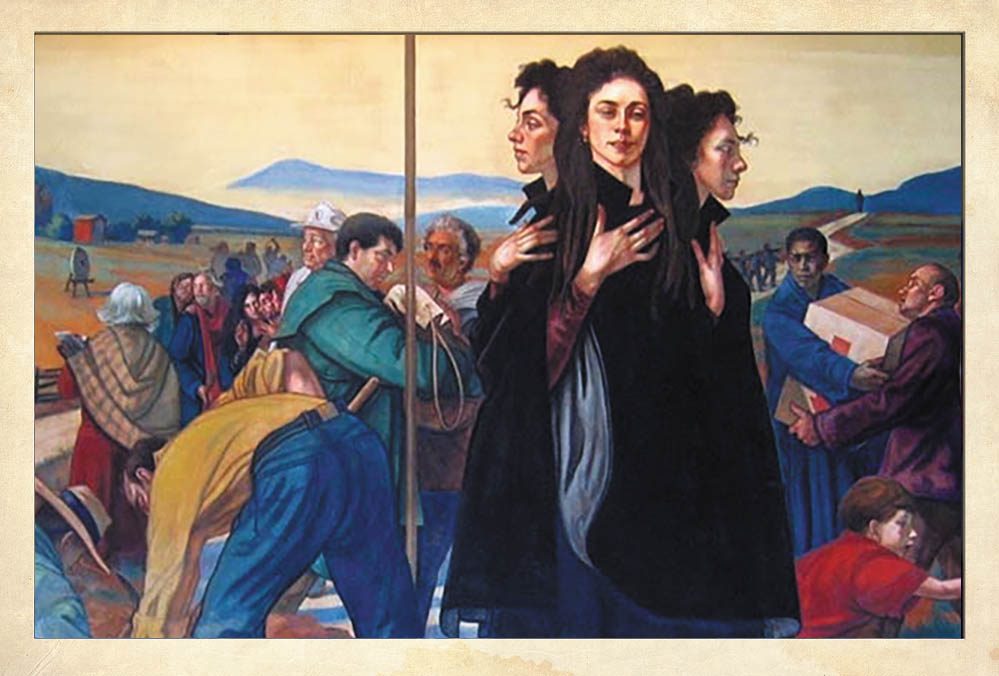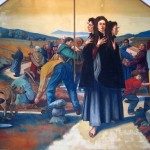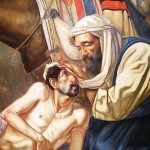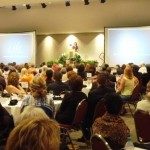
Quick Fact
Fresco master Benjamin F. Long IV uses the same fresco technique that Michelangelo used when painting the Sistine Chapel.
300 South Center Street
Statesville, NC 28677
The influence of ancient stories and myths can be detected in much of Statesville’s fresco, entitled “Images at the Crossroads”. Mythology has great respect for the goddess of the crossroads as she has the power of knowing what’s ahead. She is usually portrayed with three heads or faces, signifying her ability to know what is going on in every direction. The maiden stands at the heart of the fresco in the foreground. Her hand to her breast is an ancient signal of greeting – a sign of arrival.
It is no coincidence that Ben Long chose this image to serve as the inspiration for Statesville’s fresco. Statesville is a city that at a crossroads of two major interstate highways.
All the elements of what happens when paths come together and cross can be found in the medley of vignettes painted as a backdrop to the guardian of the crossroads. No one image is meant to overshadow another. It is hoped that observers will have their own response to the figures and faces in the environs of the maiden.
This is one of the frescoes on the Benjamin F. Long IV North Carolina Fresco Trail.
About the Artist
Born in Texas in 1945, artist Benjamin F. Long IV grew up in Statesville, and studied at the University of North Carolina at Chapel Hill and the Art Student’s League in New York. He later lived in Florence, Italy, where he began his apprenticeship under Maestro Pietro Annigeni. He has since achieved international fame as a master of both true fresco, drawing and oil painting. His excellence in the field of fresco painting has resulted in worldwide commissions, including France and Italy and several sites in North Carolina.
What is a Fresco?
Fresco is the medium Michelangelo chose when he painted the ceiling of the Sistine Chapel. The technique involves mixing sand and lime, placing the mix on a wall and painting it while it’s still wet. Fresco painting is a tenuous art. So quickly does the bonding of the pigment to wet plaster take place that great skill and meticulous planning must be maintained in order to achieve the beautiful result.
The Fresco Process
With a fresco, there are many steps before the first stroke of paint is placed on the wall. The scratch coat is made up of partially slaked lime combined with sand. The preliminary drawings were sketched and then refined. Individual studies of certain elements of the painting – such as portraits – were produced to help in the artist’s development of the original composition.
Cartoons were created and enlarged to the full scale of the finished fresco to ensure the accuracy when transferring the drawing to the wall. The wall was made into a grid where the drawings were traced on the wall through a process called pouncing. A large needle is used to punch along the traced lines every few inches. These punched tracings are affixed to the wall and a dry medium is used to create a dotted outline on the scratch coat.
The final painting surface must be neither too wet nor too dry. Extreme care is given to mixing the pigments with distilled water. Mulling is labor intensive, but necessary to ensure that pigments and lime crystals are ground finely enough to be drawn into the porous plaster as it dries. The fresco is now completed with the emulsifying of lime and sand, complimented with the elegant colors for people to view.
![]() The Blue Ridge Heritage Trail is a program of the Blue Ridge National Heritage Area Partnership.
The Blue Ridge Heritage Trail is a program of the Blue Ridge National Heritage Area Partnership.











